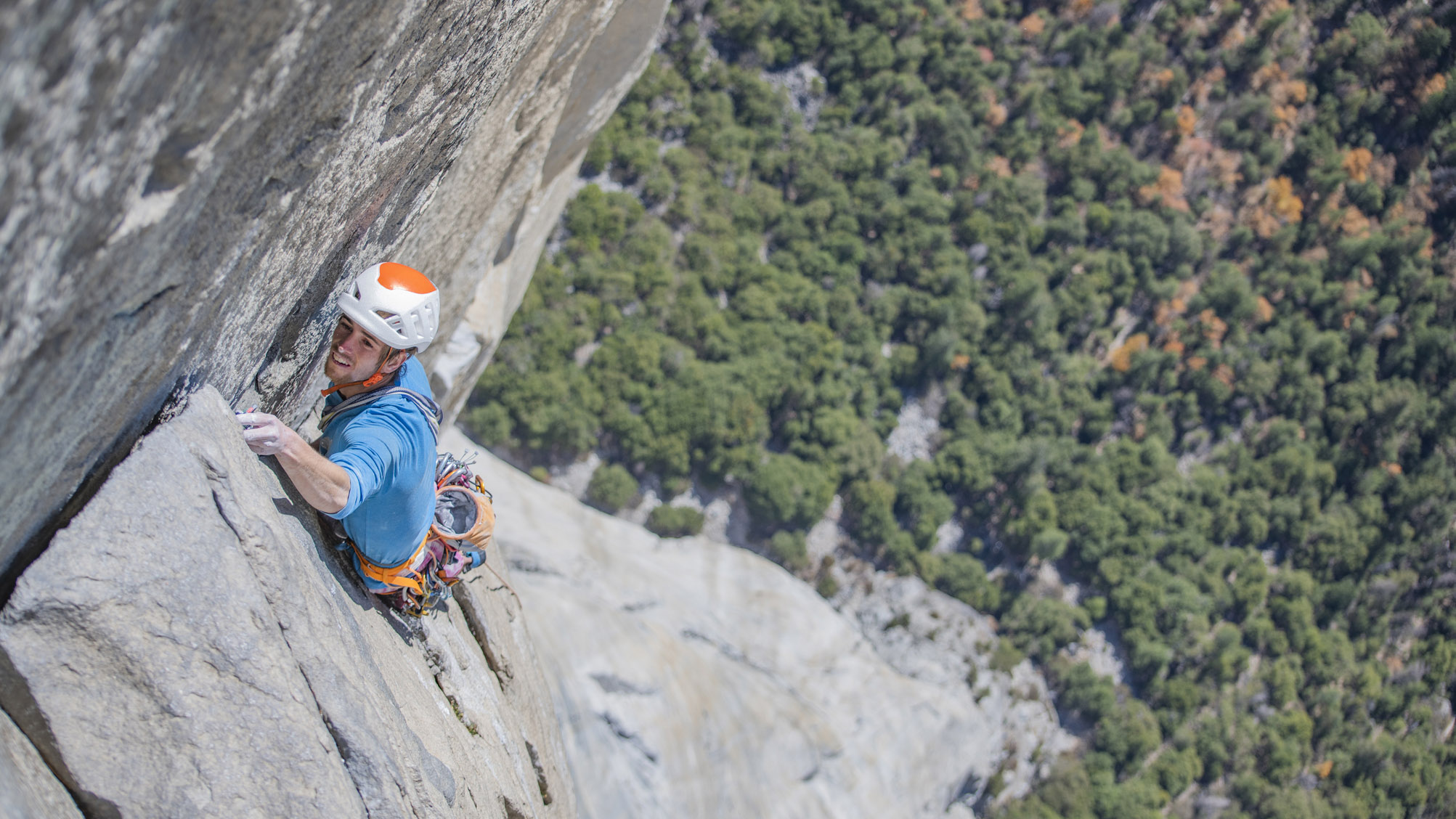What is big wall climbing?
The imposing rock slabs across the world that require grit, skill and determination to send

Thanks to drone footage, and Jimmy Chin, big wall climbing has blasted out of its former seat as a fringe activity inhabited by largely off-the-grid dirt bags and onto the big screen. Whether or not you’ve ever been to Yosemite or even owned a pair of climbing shoes, you probably know what El Capitan is and you might even know how rock climbers poop on big walls.
Compared to trad climbing or sport climbing, big wall climbing manages to be a term that’s both self-explanatory and a little loose. In this article, we explain what big wall climbing entails, and where to go to do it.
What is big wall climbing?
Big wall climbing is a form of multi-pitch climbing that takes place on routes that typically require at least a full day, if not several days, to send. There is no official qualification for what makes a big wall climb in terms of length or number of pitches, but these routes generally have a minimum of six to 10 pitches. Perhaps the most famous, El Capitan, rises 3,000 feet in elevation and typically takes two to five days to scale.
Big wall climbing usually means living on the wall for at least a few days – though Tommy Caldwell’s first free climb of the Dawn Wall lasted 19 days while Alex Honnold famously free soloed Freerider in under four hours, so as we say, it’s loose. More often than not, the only way off the wall is to reach the top, or rappel all the way down, in pitches. Needless to say, therefore, big wall climbing is for the absolute best climbers and requires a good pinch of grit, skill and dedication.

Big wall climbing began in the Dolomites in the 1930s then spread to the Alps where early climbers tackled the west face of Mont Blanc. In the 1960s, however, a group of climbing pioneers like Lynne Hill and Royal Robbins placed Yosemite National Park squarely at the center of the big wall universe, with their first ascents of giant slabs like El Capitan and Half Dome. You can learn more about their contributions to big wall climbing in the documentary Valley Uprising.
How do you go about big wall climbing?
With the obvious exception of Honnold’s famous free solo on El Cap, big wall climbing is usually done in pairs and, due to the lengthy nature of the routes, usually means sleeping on portaledges, using poop tubes and hauling all your gear up with you. Once you’re up on the wall, there’s nowhere to hide.
How you go about big wall climbing all depends on the climbers and the route. It may take the form of a mix of aid climbing and free climbing, though it would be a great taboo indeed to place any permanent gear in the wall in order to send it.
Advnture Newsletter
All the latest inspiration, tips and guides to help you plan your next Advnture!

Notable big wall climbing routes
Though big wall climbing began in Europe and has made California its unofficial headquarters, there are famous routes on nearly every continent.
- Yosemite: Half Dome and El Capitan
- Dolomites: Tre Cime di Lavaredo
- Mont Blanc: Petit Dru
- Baffin Island, Canada: Mount Thor and Mount Asgard
- Karkoram: Trango Towers
- Patagonia: Fitz Roy, Cerro Torre, Cordillera Paine
- Antarctica: Ulvetanna Peak
As another general but unofficial distinction, big wall routes such as those listed above are exclusively rock climbing routes, while similar routes that entail snow trekking and ice climbing are referred to as alpine climbing routes, popular in the Alps, the Himalayas and Patagonia.
Julia Clarke is a staff writer for Advnture.com and the author of the book Restorative Yoga for Beginners. She loves to explore mountains on foot, bike, skis and belay and then recover on the the yoga mat. Julia graduated with a degree in journalism in 2004 and spent eight years working as a radio presenter in Kansas City, Vermont, Boston and New York City before discovering the joys of the Rocky Mountains. She then detoured west to Colorado and enjoyed 11 years teaching yoga in Vail before returning to her hometown of Glasgow, Scotland in 2020 to focus on family and writing.

